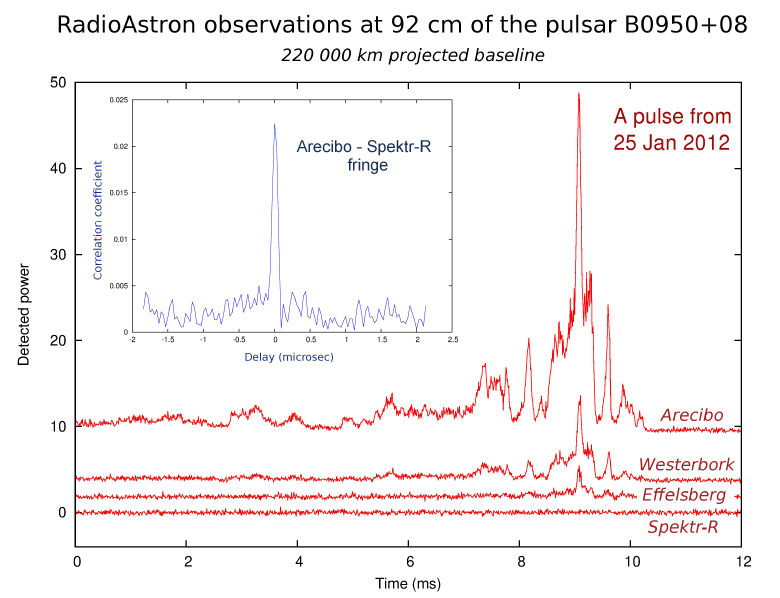| Description: | In Very Long Baseline Interferometry (VLBI) the image resolution is proportional to the maximum separation of the radio telescopes, limited by the diameter of the Earth. The only way to increase the resolution at any given observing frequency is to increase the baseline length, that is, place a radio telescopes into space. This technique is called Space-VLBI (SVLBI) and has been successfully demonstrated by the TDRSS experiments in 1986-1988, and in the Japanese-led VSOP mission in 1997-2003. With the apogee height of 21,400 km, the VSOP mission roughly tripled the baseline length achievable with Earth-based VLBI arrays.
On 18 July 2011, the Russian Federal Space Agency launched the Spektr-R spacecraft – the orbital component of the RadioAstron SVLBI system. RadioAstron is a new, international project with very ambitious goals. The orbit of the satellite has an apogee distance of 350,000 km, an order of magnitude larger than in the VSOP project. Carrying out interferometric measurements with RadioAstron at such long distances is a very challenging task. Some of the most sensitive radio telescopes on Earth, including the Westerbork Synthesis Radio Telescope have been actively involved in the in-orbit checkout and fringe searching efforts with RadioAstron, as well as the early science programme that has recently started. The mission announced their latest milestone on 21 March 2012: they detected interference fringes on projected baselines of 220,000 km to Westerbork, Effelsberg and Arecibo at 92 cm wavelength. The observed source was a well-known pulsar B0950+08, a primary target of the early science programme. For more details on this detection and other news on RadioAstron see the Astron press release.
|

